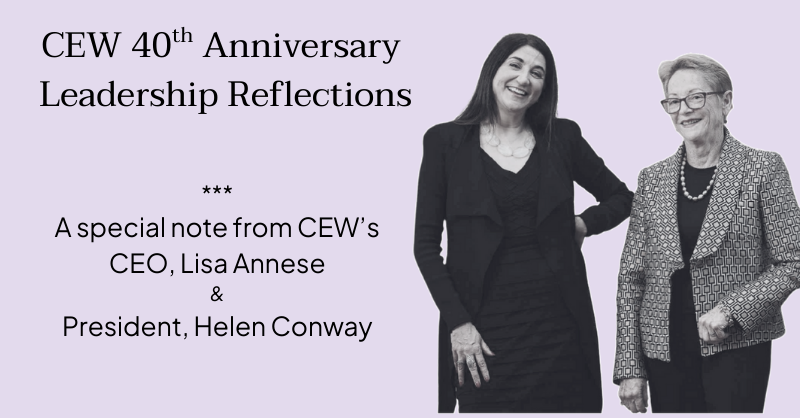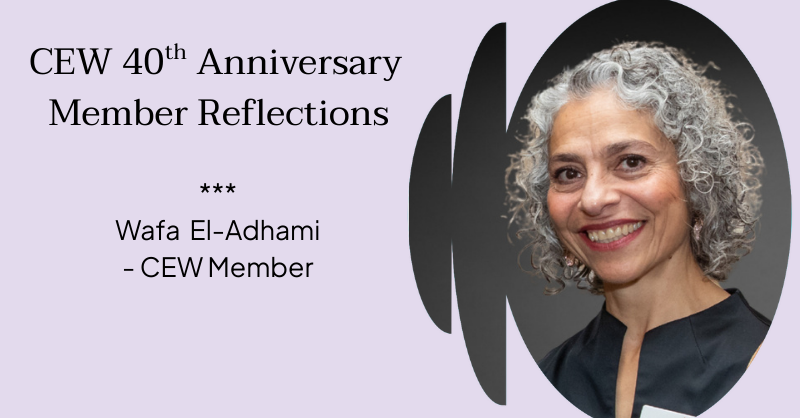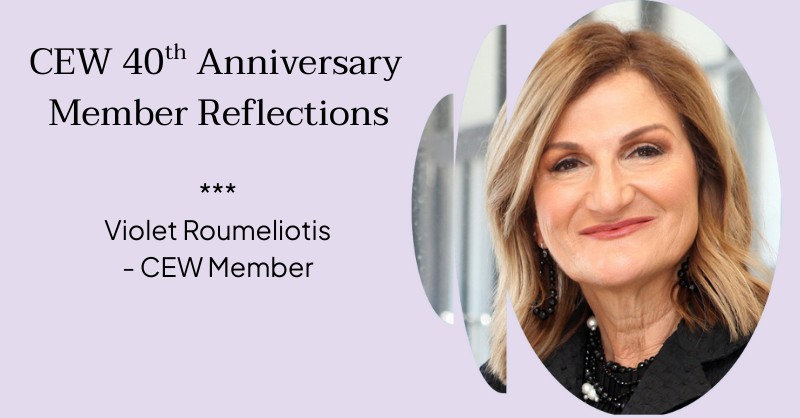Member Reflections: Andrea Staines OAM

Introducing - Andrea Staines OAM
CEW Member Since: 2010
State Chapter: QLD
Andrea Staines OAM has been a full-time Non-Executive Director for almost two decades, on a range of mostly Australian entities in transport, infrastructure and retail service arenas. She has been a Director in the listed, private, government, social enterprise and foundation spaces, and is a Fellow of the Australian Institute of Company Directors.
At 38, Andrea became Australia's first female airline CEO, as CEO Australian Airlines (mk II) - an Asia-focused Qantas subsidiary which she co-launched. Concurrently, she was a member of Qantas' executive leadership team. Prior to Australian Airlines, Andrea led Qantas Revenue Management, making her the global airline industry's first female head of Revenue Management. During her time at Qantas, she was also sole-parenting two young children. To read Andrea's full bio, click here.
A little backstory about Andrea Staines OAM ...
I was raised in country Queensland, but my life changed when I won a scholarship to finish high school at the United World College in Singapore. I haven’t stopped travelling since! As well as Singapore, I’ve lived in several cities in the US and east coast Australia. My son was born in Dallas, and my daughter was born in Singapore (my second time living there).
I was the first member of my extended family to go to university. My corporate executive passion was working in airlines (American Airlines, Qantas, CEO Australian Airlines mark II (an international Qantas subsidiary)); my twenty-year board career has focused on transport & logistics and retail service (obviously related to airlines); my concurrent personal passions have been independent international travel, and linguistics – Spanish language, and improving the teaching of romance language vocabulary.
Andrea, what led you to become a member of CEW, and how has your membership influenced your professional or personal journey?
It was CEW's conversations at a national level about professional women's issues that first encouraged me to become a member. After I left the airlines, I moved to the Gold Coast for family reasons, and it was from that I developed a national board portfolio. One of the benefits of CEW, the ability to enable me to stay connected to Sydney and Melbourne discussions on areas of national interest to women. I made, and still make, efforts to travel ‘south’ to Sydney AGMs and dinners etc, and now Melbourne dinners. Of course, video conferencing around AGMs and events has replaced some travel.
Do you have a CEW experience that has resonated with you the most?
Being a member of the CEW Scholarships Committee has been eye opening! I've had the opportunity to be exposed to the achievements of so many women whom I’d not heard of, who weren’t members of CEW, who weren’t (yet) in their entity’s C-suite.
Being a part of the scholarship applications assessment process resonated with me also. As a committee, we introduced the concept of volunteering by CEW members to assess applications, even if they couldn’t be a member of the committee. We also estimated the value of various executive programs – and the Leaders Program came out on top, given its accessibility and cost.
Can you tell us about some of the meaningful relationships you have formed through CEW, and why the CEW community is special to you?
I have made several good friends with members around Australia, after meeting them at CEW events. But, perhaps more importantly, I have been able to reach out to various CEW women I don’t already know to ask for their advice, because we are in the ‘sisterhood’. Early on during my membership, President Diane Smith-Gander reminded the members that one commitment of membership was to always take or return a call from another CEW member.
CEW’s mission is ‘Women Leaders Empowering All Women’ - What does this mean to you?
Yes, cognitively, we have expanded our mission from ‘women leaders enabling women leaders’, to ‘women leaders empowering all women’. A huge remit. But CEW is a larger team now – both membership and executive office. And one thing I have appreciated about living and working back in Australia, after living and working in the US, is that Australia takes advantage of being small. We can get our heads around women’s issues; we can gather a majority of experts, influencers and decision-makers under the one tent (literally); we can access government decision-makers with our CEW policy inputs.
How do you think CEW carries out this mission today and into the future?
We have an interesting philosophical question. The more successful we are, at least on the measure of women whose professional roles qualify them for CEW membership, the larger we become. In theory, in the extreme, we should aim to be obsolete (i.e., when approximately 50% of leadership roles in Australia are held by women). However, our broader remit will mean a role for years to come, ensuring women’s issues of all kinds are in the minds of governments, advisors, and department leaders. Perhaps we should focus more on ensuring these policy makers are approximately 50% women?
This year, CEW is celebrating our 40th Anniversary under the banner of “40 Years of Progress” - In what ways do you believe CEW has contributed to the progress of gender equality in Australia, and what do you think this will look like in the next 40 years?
In the early days of my membership, I would describe CEW’s role as ‘nudging’ government to design policy with a gender lens, and ‘nudging’ large ASX CEOs to support and raise the profile internally of the talented women in their pipeline. During the last few Presidencies, our approach and our size sees us ‘influencing’ policy design by providing specific, organised information to the government and others.
Today, our network spans beyond the corporate sectors, and our strong communications team, using information from our pro bono consulting partners, will be an attribute for continued progress into the future.
Read more stories


